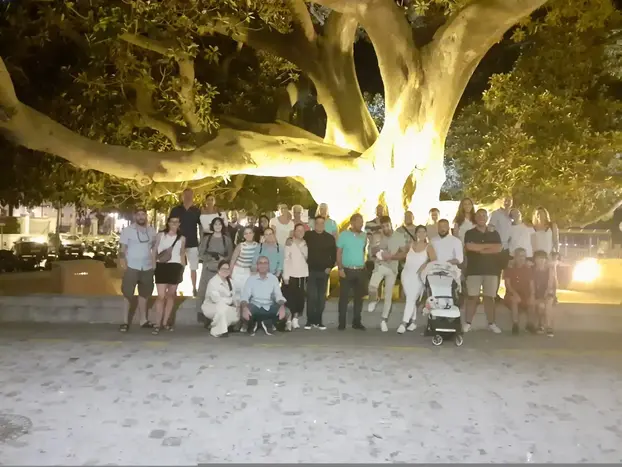Free Tours nocturnos por Cádiz
Los mejores guruwalks en Cádiz Nocturno
Última actualización:
Cádiz es una ciudad histórica en el suroeste de España, en la costa atlántica. Para descubrir todos sus encantos, te recomendamos consultar nuestra guía completa sobre qué ver en Cádiz. La ciudad es conocida por sus fuertes influencias romanas y moriscas, y si dispones de tiempo, vale la pena explorar los encantadores pueblos cercanos a Cádiz.
La ciudad fue fundada por los fenicios, que vivieron allí hasta el siglo III a. C. Más tarde, Cádiz se convirtió en un importante puesto comercial para los romanos. Dependiendo del tiempo que tengas para tu visita, te ofrecemos guías específicas para disfrutar de la ciudad en un día, dos días o tres días. Los moros tomaron el control de la ciudad en el 711 d. C., hasta que fueron expulsados por el rey Alfonso X de Castilla en 1262. Ordenó la reconstrucción de la ciudad con edificios de una sola planta a lo largo de calles estrechas para facilitar la defensa de los invasores.
Durante la Segunda Guerra Mundial, Cádiz fue declarada 'ciudad abierta' y no bombardeada porque no tenía importancia militar en ese momento. Hoy en día, además de su rico patrimonio histórico, la ciudad es famosa por sus espectaculares playas, que son un complemento perfecto a cualquier visita cultural.
Con toda esta historia detrás la ciudad andaluza tiene mucho que ofrecer a los turistas, y una manera especial y diferente de descubrirla es por la noche. Para no perderte detalle alguno, nada mejor que contar con la guía especializada y profesional de los Free Tours por el Cádiz Nocturno que te ofrecemos aquí en GuruWalk.
Cádiz tiene muchos barrios maravillosos para explorar, y Pópulo es uno de los más bellos. Es una zona residencial con jardines y espacios verdes como Los Jardines de los Vinos, con sus avenidas arboladas y piscinas ornamentales.
La Plaza de Pópulo es un lugar popular para visitar, especialmente los domingos cuando los residentes se reúnen por la mañana para una charla tradicional o cotillear, aunque no desmerece por la noche iluminada, que es como la vamos a disfrutar en esta ocasión.
Las estrechas calles de piedra conducen a iglesias como la Iglesia de San Gabriel Arcángel, que fue construida en 1727. Pero lo que realmente hace especial a este barrio son sus pequeños museos, como el Museo Arqueológico y Etnográfico "Tierra del Fuego". Desgraciadamente no están abiertos por la noche aunque con su iluminación artificial lucen realmente espectaculares.
No puedes dejar de ver la Catedral de Cádiz, que es uno de los monumentos más significativos del Renacimiento. La catedral fue construida en estilo gótico-renacentista y está ubicada en la Plaza de la Catedral. La catedral fue consagrada en 2001 y se convirtió en Patrimonio de la Humanidad por la UNESCO en 2004.
Es uno de los puntos de referencia más emblemáticos de España y una vista impresionante por la noche para los visitantes y para los lugareños que pasan por allí.
Y por supuesto, la Iglesia de Santa Cruz de Cádiz, que es un edificio religioso de impresionante arquitectura colonial. Actualmente es un punto de interés turístico para los visitantes de Cádiz. Desde la entrada, el visitante camina hasta el altar mayor y entra en un laberinto de capillas y pasillos en diferentes niveles. La iglesia tiene una fachada que fue construida en estilo neoclásico en 1771.
La iglesia fue construida originalmente para reemplazar una que había sido destruida por un terremoto en 1522. Es conocida como "La Catedral Vieja" y se cree que fue levantada sobre una antigua mezquita. Te puedes imaginar cómo luce con su iluminación nocturna, impresionante.
Por último, pero no menos importante, el Gran Teatro Falla, que se encuentra cerca de la Plaza de España, en el corazón de Cádiz. Fue construido entre 1905 y 1907 siguiendo los planos del arquitecto Aníbal González.
El teatro tiene una capacidad para 1.900 personas y también se utiliza como centro de exposiciones, escuela de teatro y cine. Su iluminación nocturna es digna de ser disfrutada por los visitantes.





